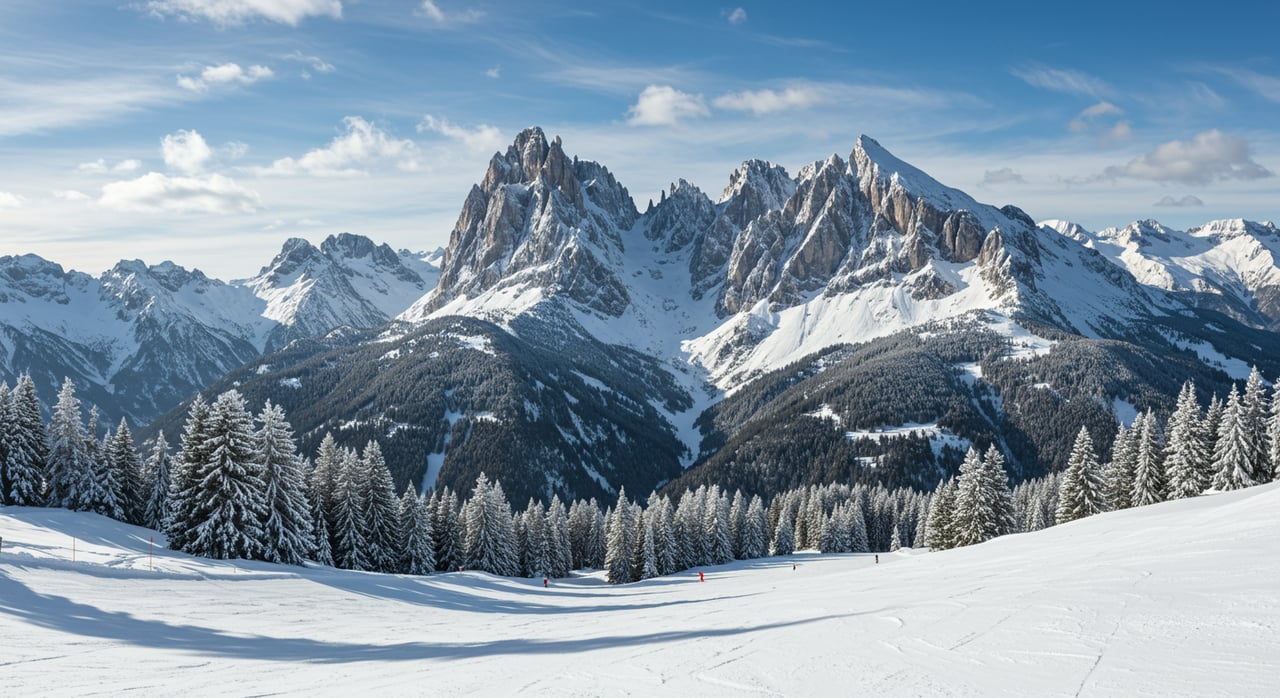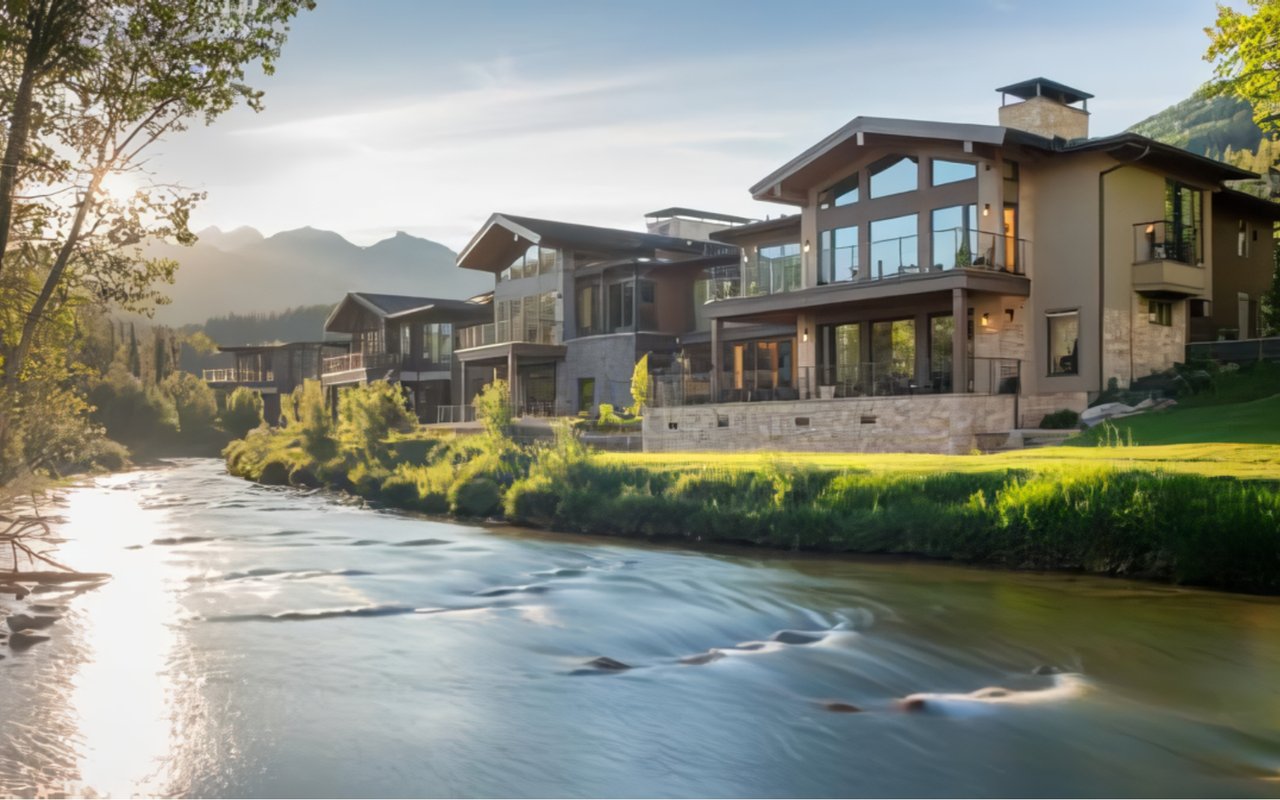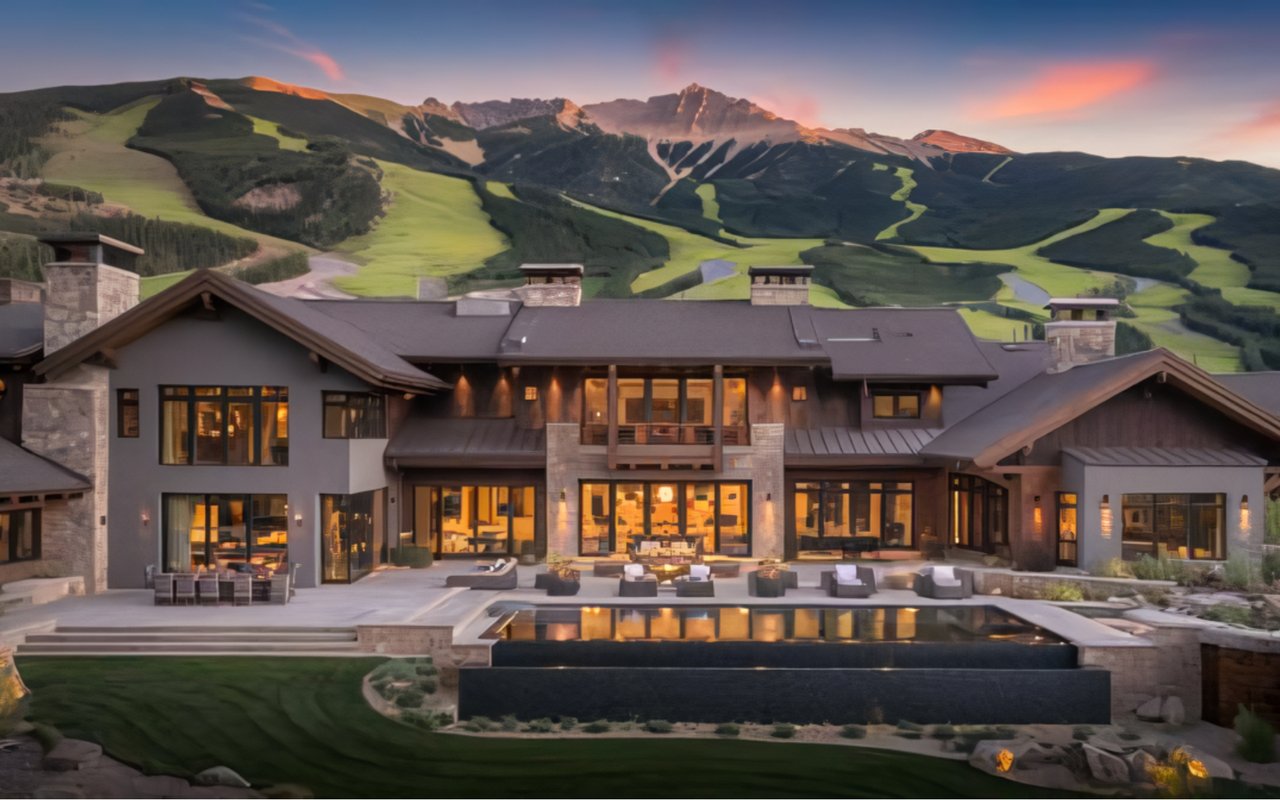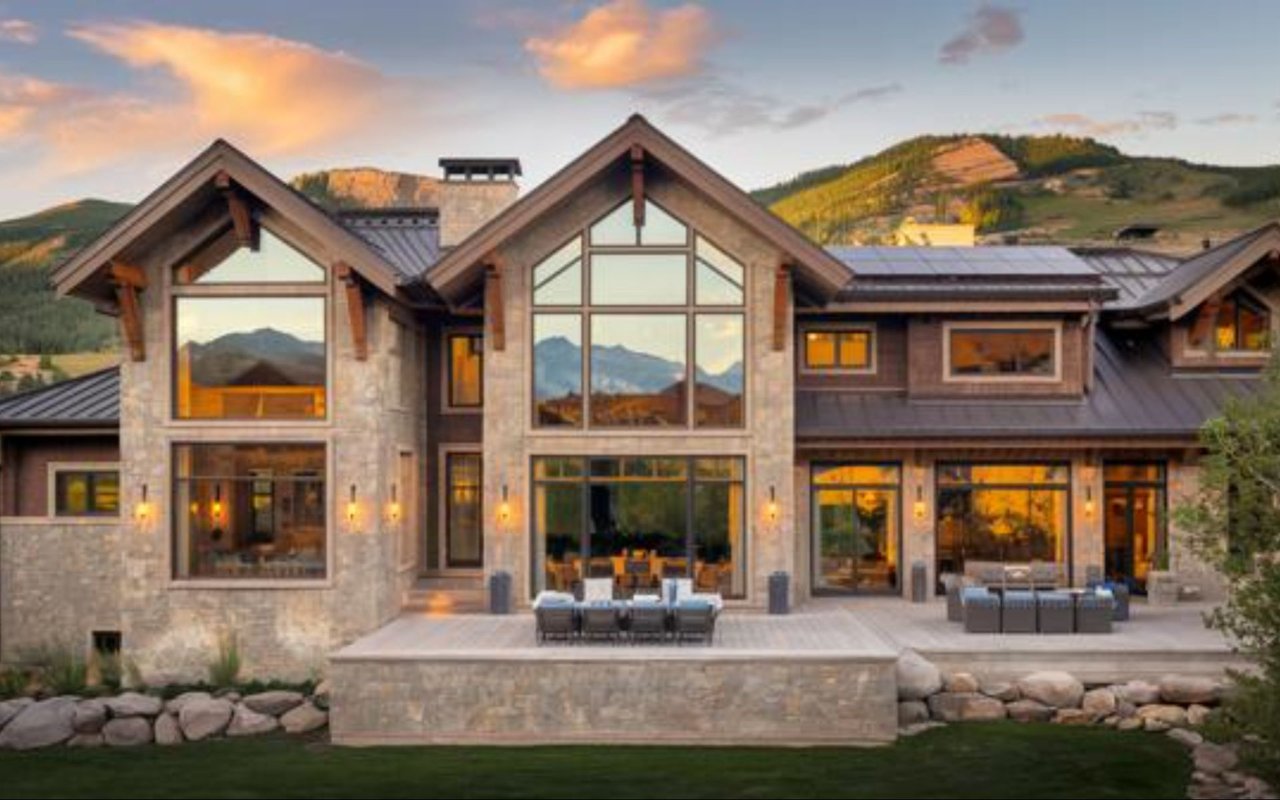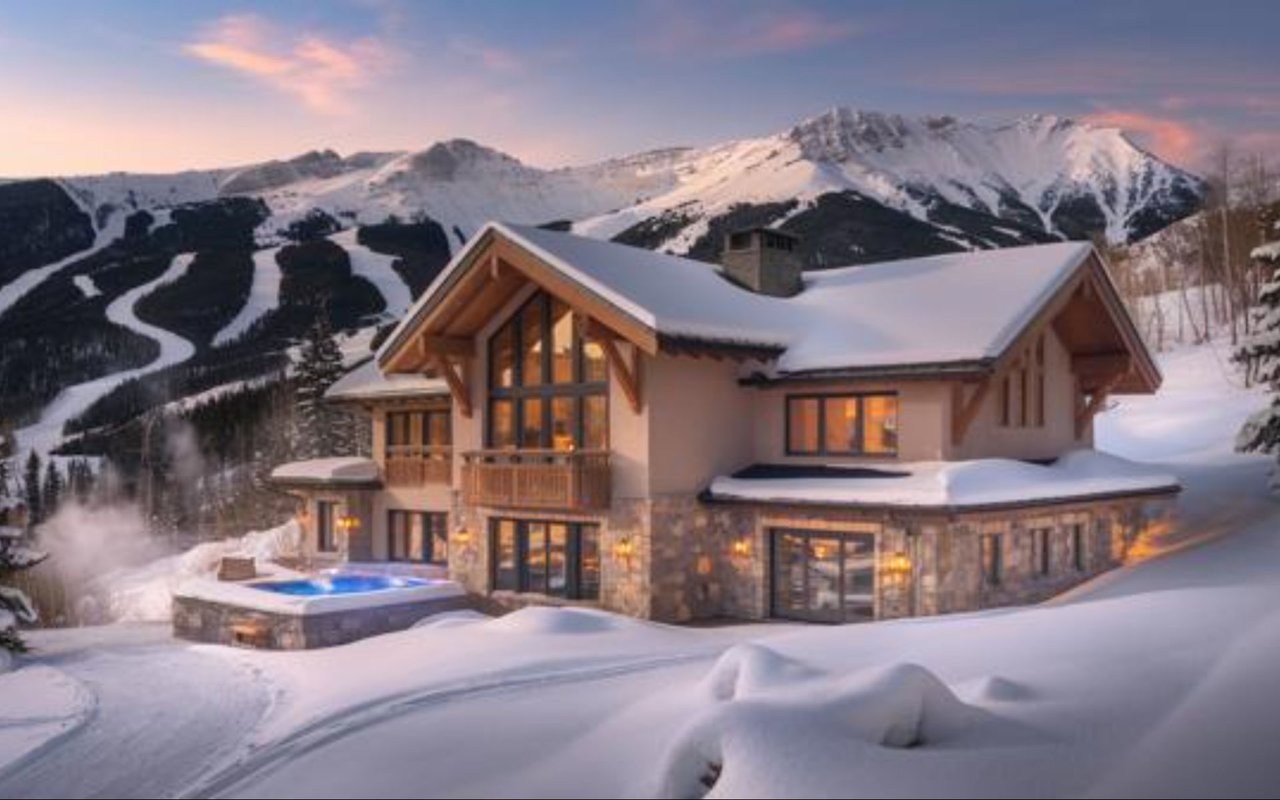Vail, Colorado is a beautiful, world-class mountain resort town that attracts visitors from all over the globe. But just how high is Vail Colorado? In this informative and entertaining blog post, we’ll answer that question and many more.
We’ll explore Vail Mountain, the Vail Ski Resort, and the stunning Vail Valley, while also discussing altitude sickness and what you need to know to make the most of your visit.
We’ll explore Vail Mountain, the Vail Ski Resort, and the stunning Vail Valley, while also discussing altitude sickness and what you need to know to make the most of your visit.
How High is Vail Colorado?
Vail, Colorado, is located at an impressive altitude of 8,150 feet (2,484 meters) above sea level. This high elevation not only provides the town with a stunning backdrop of mountain peaks, but also contributes to its reputation as a premier ski destination in the United States.
KEY TAKEAWAY: Vail, Colorado sits at an altitude of 8,150 feet (2,484 meters), making it an ideal location for skiing and other mountain adventures.
Vail Mountain: The Peaks and Valleys
As a real estate agent in the area, I can tell you that one of the main attractions of Vail is the incredible Vail Mountain. With a summit elevation of 11,570 feet (3,527 meters), it is one of the most popular ski mountains in North America. Vail Mountain is home to the legendary Back Bowls and Blue Sky Basin, offering an unforgettable skiing and snowboarding experience.KEY TAKEAWAY: Vail Mountain boasts a summit elevation of 11,570 feet (3,527 meters), providing a fantastic skiing experience with its famous Back Bowls and Blue Sky Basin.

Vail Ski Resort, Vail Colorado, Mountains
Vail Ski Resort: Endless Fun on the Slopes
The Vail Ski Resort is the crown jewel of the town, featuring 5,289 acres of skiable terrain, 31 lifts, and over 195 trails. The resort is known for its diverse terrain, ranging from beginner-friendly slopes to challenging black diamond runs, making it perfect for visitors of all skill levels. And with an annual average of 354 inches of snowfall, you’re almost guaranteed a fantastic ski experience.KEY TAKEAWAY: Vail Ski Resort offers 5,289 acres of skiable terrain, 31 lifts, and over 195 trails, ensuring a thrilling ski adventure for everyone.
Vail Valley: A Year-Round Wonderland
While Vail is famous for its ski resort, the surrounding Vail Valley is a year-round playground that offers a plethora of outdoor activities. In the warmer months, visitors can enjoy hiking, mountain biking, fishing, golfing, and more. The vibrant Vail Village and Lionshead Village are filled with world-class dining, shopping, and entertainment options, ensuring that thereis never a dull moment in this alpine paradise.KEY TAKEAWAY: The Vail Valley is a year-round destination, with a wide range of outdoor activities, fine dining, shopping, and entertainment in both Vail Village and Lionshead Village.
Altitude Sickness: Be Prepared
As a seasoned real estate agent in the area, I have seen many visitors experience altitude sickness due to Vail’s high elevation. Symptoms of altitude sickness can include headache, dizziness, nausea, and shortness of breath.To minimize the risk of altitude sickness, be sure to stay well-hydrated, avoid overexertion, and consider spending a day or two acclimatizing in a lower altitude area before heading up to Vail.
KEY TAKEAWAY: Be prepared for altitude sickness by staying hydrated, avoiding overexertion, and acclimatizing to the high elevation before your Vail adventure.
Epic Pass: A Ticket to Adventure
The Epic Pass is a fantastic way to enjoy Vail Ski Resort and other world-class ski destinations. The pass provides unlimited access to multiple ski resorts in North America, including Vail, Beaver Creek, Breckenridge, and Keystone in Colorado.It also offers limited access to international resorts in Europe, Japan, and Australia. With various pass options, you can choose the one that best suits your ski adventure needs.

Vail Colorado
KEY TAKEAWAY: The Epic Pass offers unlimited access to Vail Ski Resort and other top ski destinations, giving you the freedom to explore multiple resorts with one convenient pass.
Vail’s Culinary Scene: A Food Lover’s Dream
Vail boasts a diverse and impressive culinary scene, with a wide variety of dining options to suit every palate. From fine dining establishments like Sweet Basil and Mountain Standard, to casual eateries such as Blue Moose Pizza and The Little Diner, there is something for everyone.Don’t forget to indulge in the famous après-ski scene, with bars and lounges like Garfinkel’s and The Red Lion offering a lively atmosphere and tasty bites.
KEY TAKEAWAY: Vail’s culinary scene offers a wide variety of dining options, from fine dining to casual eateries, and a vibrant après-ski scene that should not be missed.
Vail’s Lodging Options: Rest in Style
Whether you’re looking for luxurious accommodations or budget-friendly lodging, Vail has a plethora of options to choose from. For a high-end experience, consider staying at the Four Seasons Resort and Residences Vail or The Ritz-Carlton Residences.If you’re seeking more affordable accommodations, Vail Racquet Club Mountain Resort and Evergreen Lodge offer great value without compromising on quality and location.
KEY TAKEAWAY: Vail offers a range of lodging options, from luxurious resorts to budget-friendly hotels, ensuring a comfortable stay for every traveler.

Vail Colorado
Sustainability in Vail: Embracing Green Initiatives
Vail is committed to environmental sustainability and has implemented numerous green initiatives to protect its natural beauty.The town has set ambitious goals, such as achieving zero waste by 2030 and reducing greenhouse gas emissions by 80% by 2050. Vail Ski Resort has also adopted eco-friendly practices, including investing in energy-efficient snowmaking equipment, using renewable energy sources, and supporting habitat restoration projects.
KEY TAKEAWAY: Vail is dedicated to environmental sustainability, with the town and ski resort adopting numerous green initiatives to protect the region’s natural beauty and resources.

Vail Colorado, Gore Creek Drive, Nick Csakany
Getting Around Vail: Exploring with Ease
Vail offers convenient and eco-friendly transportation options, making it easy to navigate the town and surrounding areas. The Vail Transit System provides free bus service throughout the town, connecting Vail Village, Lionshead Village, and other key locations. For those looking to explore the nearby attractions, the Eagle County Transit System offers regional bus service to destinations such as Beaver Creek, Avon, and Edwards.Conclusion: Experience the Magic of Vail, Colorado
In summary, Vail, Colorado, offers a world-class ski resort, stunning mountain vistas, and an array of year-round activities that cater to outdoor enthusiasts and adventure-seekers alike. With its rich history, diverse culinary scene, and commitment to sustainability, Vail is an idyllic destination for families, friends, and solo travelers. As you plan your trip to this high-altitude haven, remember to take precautions to prevent altitude sickness, stay hydrated, and give your body time to adjust to the thinner air.Whether you’re carving down the slopes, exploring the charming villages, or embarking on a picturesque hike through aspen groves, Vail promises an unforgettable experience that will leave you eager to return.

Vail Colorado Ski Resort, Trail Map, Blue Sky Basin
FAQs
Q: How can I prevent altitude sickness while visiting Vail Mountain?A: Preventing altitude sickness starts with giving your body time to adjust to the higher altitude. Stay well-hydrated by drinking more water, eat foods high in carbohydrates, and consider spending a day or two at a lower elevation before heading to Vail. If you’re at high risk or have a history of altitude sickness, consult with a doctor about prescribed medication to help prevent acute mountain sickness.
Q: What are some popular summer activities in Vail Valley, besides mountain biking?
Q: What are some popular summer activities in Vail Valley, besides mountain biking?
A: Vail Valley offers a wide range of summer activities, such as hiking through beautiful aspen trees, fishing in the Gore Range, and exploring the mountains on horseback. You can also enjoy scenic gondola rides on the Eagle Bahn Gondola, relax at local hot springs, or visit the historic Camp Hale, where the U.S. Army’s 10th Mountain Division trained during World War II.
Q: How do I get from Denver to Vail and other nearby towns like Grand Junction and Colorado Springs?
Q: How do I get from Denver to Vail and other nearby towns like Grand Junction and Colorado Springs?
A: Vail is approximately 100 miles west of Denver, and you can reach it by driving along Interstate 70. To get to Grand Junction, continue west on I-70 for about 130 miles. For Colorado Springs, head south on I-25 from Denver for roughly 70 miles. Eagle County Regional Airport, near Vail, also offers flights to and from various locations.
Q: Can you tell me more about Vail Ski Resort’s history and how it has grown to be the largest ski area in Colorado?
Q: Can you tell me more about Vail Ski Resort’s history and how it has grown to be the largest ski area in Colorado?
A: Vail Ski Resort was founded in 1962 by Pete Seibert, a World War II veteran, and Earl Eaton, a local resident. They discovered the perfect location for a ski resort in the Back Bowls and Blue Sky Basin areas. Over the years, Vail has expanded its skiable area, becoming the largest ski resort in Colorado. The resort now includes both Vail Village and Lionshead Village, offering a year-round destination for outdoor enthusiasts.
Q: What is the base elevation of Vail Mountain, and how does it compare to the peak elevation?
Q: What is the base elevation of Vail Mountain, and how does it compare to the peak elevation?
A: The base elevation of Vail Mountain is 8,150 feet (2,484 meters) above sea level, while the peak elevation reaches 11,570 feet (3,527 meters). The higher elevations provide stunning views and excellent skiing conditions in the Back Bowls and Blue Sky Basin.
Q: What should I do if I experience mild symptoms of altitude sickness while in Vail?
Q: What should I do if I experience mild symptoms of altitude sickness while in Vail?
A: If you experience mild symptoms such as headache, nausea, or dizziness, it’s essential to rest, stay hydrated, and avoid overexertion. If your symptoms worsen or become life-threatening, such as in the case of high altitude cerebral edema, seek immediate medical attention.
Q: How does the oxygen level at Vail’s high elevation affect my body?
Q: How does the oxygen level at Vail’s high elevation affect my body?
A: At higher altitudes, there is less oxygen in the air, which can cause your body to work harder to supply enough oxygen to your vital organs. It’s important to take it easy during your first day in Vail, allowing your body to adjust to the higher altitude before engaging in any strenuous activities.
Q: Are there any scenic drives near Vail that showcase the beauty of the surrounding mountains and valleys?
Q: Are there any scenic drives near Vail that showcase the beauty of the surrounding mountains and valleys?
A: The Vail Pass, a stretch of Interstate 70, offers stunning views of the surrounding mountains, valleys, and aspen groves. For a more leisurely drive, consider exploring the lower Eagle River Valley or heading west to admire the breathtaking views along the Colorado River.
Q: What is the history of Vail and its connection to the Ute Indians?
Q: What is the history of Vail and its connection to the Ute Indians?
A: Before European settlers arrived, the Ute Indians inhabited the Vail Valley, living off the land and hunting game in the surrounding mountains. As settlers moved into the area, conflicts arose between the Ute Indians and the newcomers. Today, the town of Vail acknowledges and celebrates its Native American heritage with various events, exhibits, and art installations.
Q: What are the typical skiing conditions at Vail Mountain from the start of the ski season to early April?
Q: What are the typical skiing conditions at Vail Mountain from the start of the ski season to early April?
A: Vail Mountain typically opens for skiing in mid-November, with early season conditions that can vary from year to year. As the season progresses, the snowpack deepens, providing excellent skiing and snowboarding opportunities, especially in the famous Back Bowls. By early April, you can expect spring skiing conditions, with warmer temperatures and softer snow on the slopes.
Q: Can you tell me more about Vail’s China Bowl and its unique terrain?
Q: Can you tell me more about Vail’s China Bowl and its unique terrain?
A: China Bowl is one of Vail Mountain’s seven legendary Back Bowls, offering a mix of groomed runs and wide-open powder fields. With stunning views and challenging terrain, China Bowl is a must-ski for advanced skiers and snowboarders looking for an unforgettable experience on Vail’s vast mountain landscape.
Q: What are some popular après-ski spots in Vail Village and Lionshead Village?
Q: What are some popular après-ski spots in Vail Village and Lionshead Village?
A: Vail Village and Lionshead Village both offer a vibrant après-ski scene, with popular spots like Garfinkel’s, The Red Lion, and the renowned Vail Ale House. You’ll find a lively atmosphere, tasty bites, and a variety of beverages to help you unwind after a day on the mountain.
Q: What should I keep in mind when staying hydrated at high altitudes?
Q: What should I keep in mind when staying hydrated at high altitudes?
A: Staying hydrated is crucial when visiting high-altitude destinations like Vail. The air is drier, causing your body to lose more water through breathing and perspiration. Make sure to drink more water than you typically would at lower elevations, avoid excessive alcohol consumption, and consider using a humidifier in your lodging to combat the dry air.
Q: What types of foods should I eat to help my body adjust to Vail’s high elevation?
Q: What types of foods should I eat to help my body adjust to Vail’s high elevation?
A: Consuming foods high in carbohydrates can help your body adjust to higher elevations since carbohydrates require less oxygen for digestion. Opt for meals rich in whole grains, fruits, and vegetables to keep your energy levels up and support your body’s adaptation to the thinner air.
Q: How large is Vail’s skiable area, and what makes it unique?
Q: How large is Vail’s skiable area, and what makes it unique?
A: Vail boasts a skiable area of 5,317 acres, making it the largest ski resort in Colorado. The resort is known for its diverse terrain, including groomed runs, challenging moguls, and the expansive Back Bowls, which offer powder-filled bowls and gladed tree skiing for advanced skiers and snowboarders.
